Notes
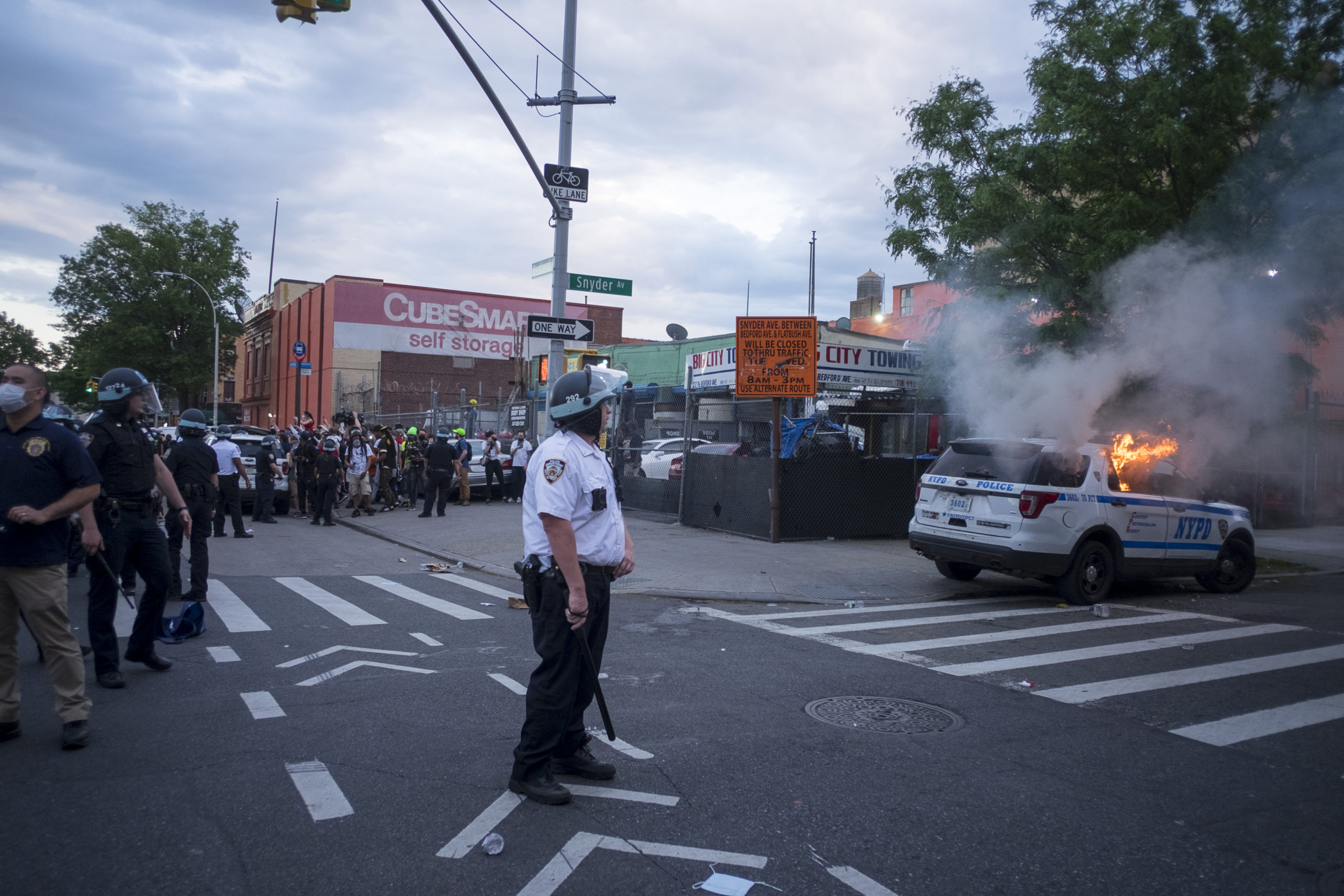
Documenting a Protest Has Never Been More Challenging
For weeks in New York City, as deaths in the vicinity surpassed 20,000, the sound of ambulance sirens ringing out on deserted streets provided a chilling, inescapable reminder of the vast, mounting toll of the Covid-19 pandemic. Now this week it is the drone of police helicopters hovering overhead that seems just as relentless. They are monitoring protests that have erupted after George Floyd, a black man, was killed by a white police officer in Minneapolis. Once again news media are delivering a steady stream of images depicting violent clashes with police.
In a recent Facebook post, New York Times writer David Gonzalez confronted photojournalists who make photographs of protests. “Fotogs: What do you value?” he asked. “Now is not a good time to start handicapping which image of Black suffering will get a Pulitzer. Especially when your POC [people of color] colleagues are worried about their families, lives and community.” Veteran photographer Joseph Rodriguez suggested in response to the post that photographers are making the “same ol’ same ol’ images of death, disease, poverty, violence. It is the DNA of several news photo contests.”
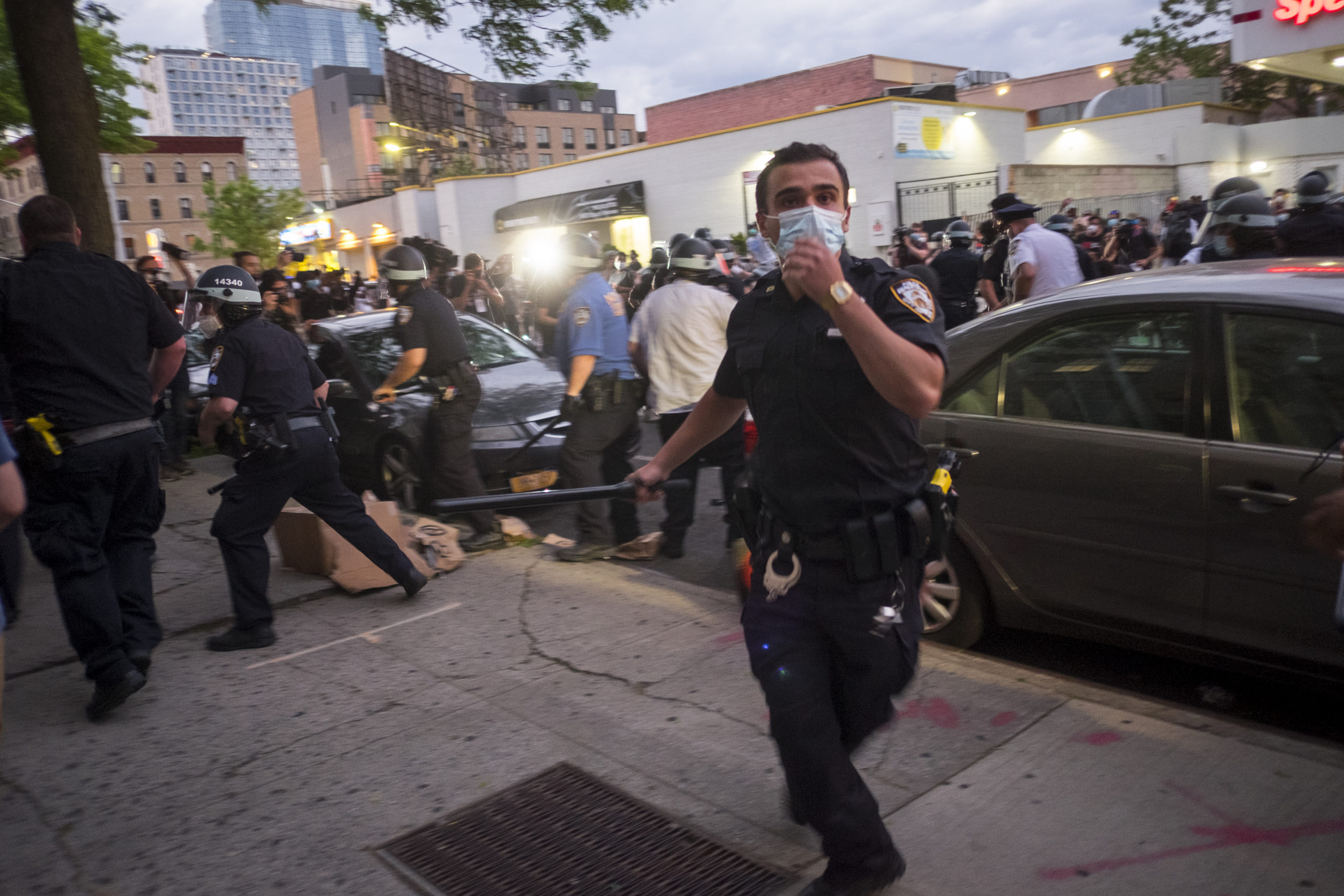
Caption: Brooklyn, New York May 30, 2020
This week has been unusually difficult for photographers who are trying to cover the protests. Police in many cities have targeted journalists with rubber bullets and arbitrary arrests. The threat of Covid-19 transmission from crowds in tight quarters continues as well, perhaps allayed only by the fact that almost all protests have been outdoors, reducing potential transmissibility.
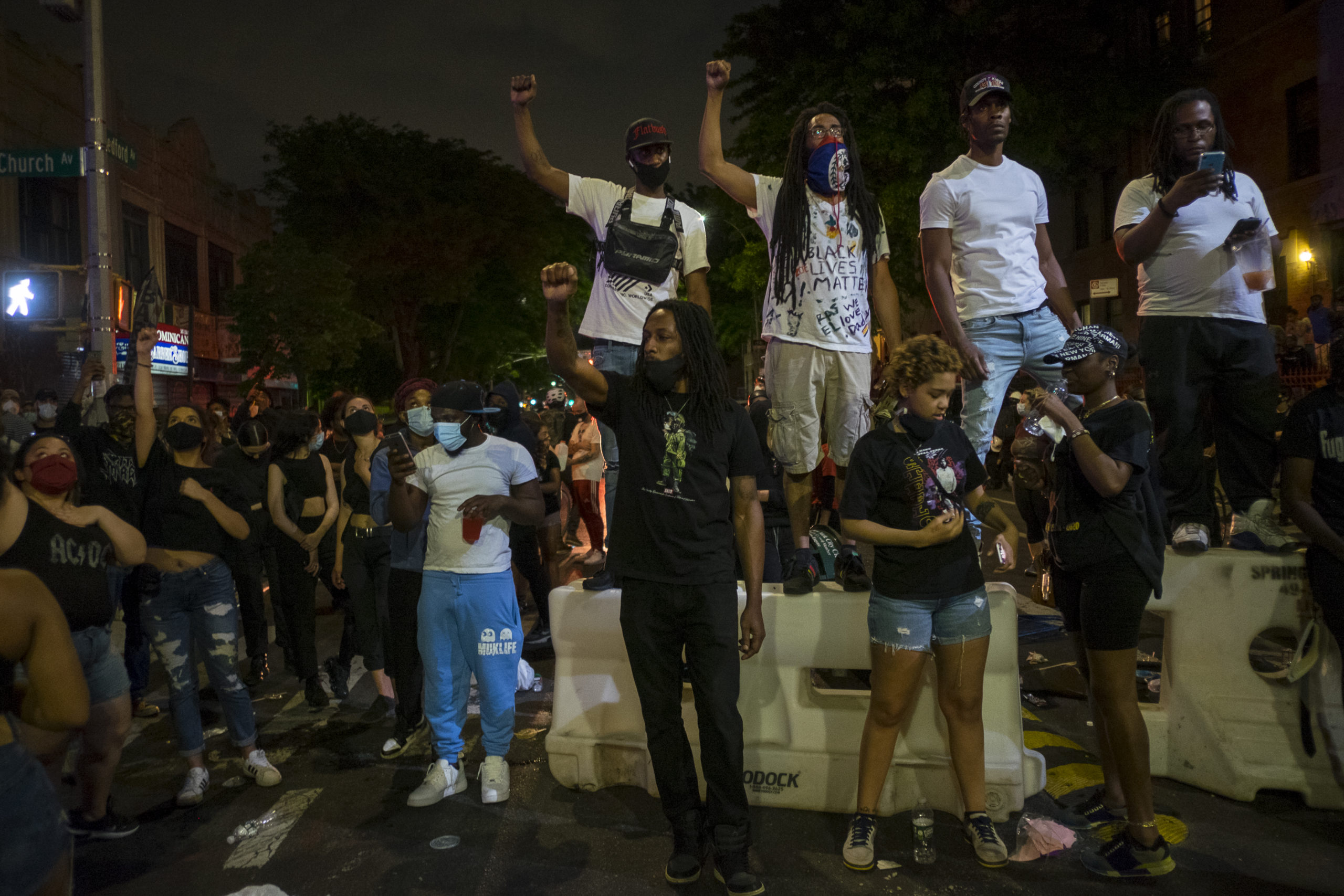
Caption: Brooklyn, New York May 30, 2020
Beyond these kinds of material and practical matters, a bigger challenge for photojournalists is about who gets to define what our photographs mean for different viewers and readers. Major news organizations routinely use words such as “looters” and “riot” in their photo captions and stories, even though these words are weighted down by racial bias and legal connotation. Those words might be accurate descriptors if reduced to their technical sense, but as with all language, their meaning is shaped by the context in which they’re being used. The contested nature of the terminology helps explain why photographers struggle to write captions that are accurate but not judgmental.
Other words such as “protester” and “demonstrator” would seem to be free of any unfair prejudice, but not in the context of accusations that “outside agitators” and “provocateurs” are trying to infiltrate peaceful protests to incite violence.
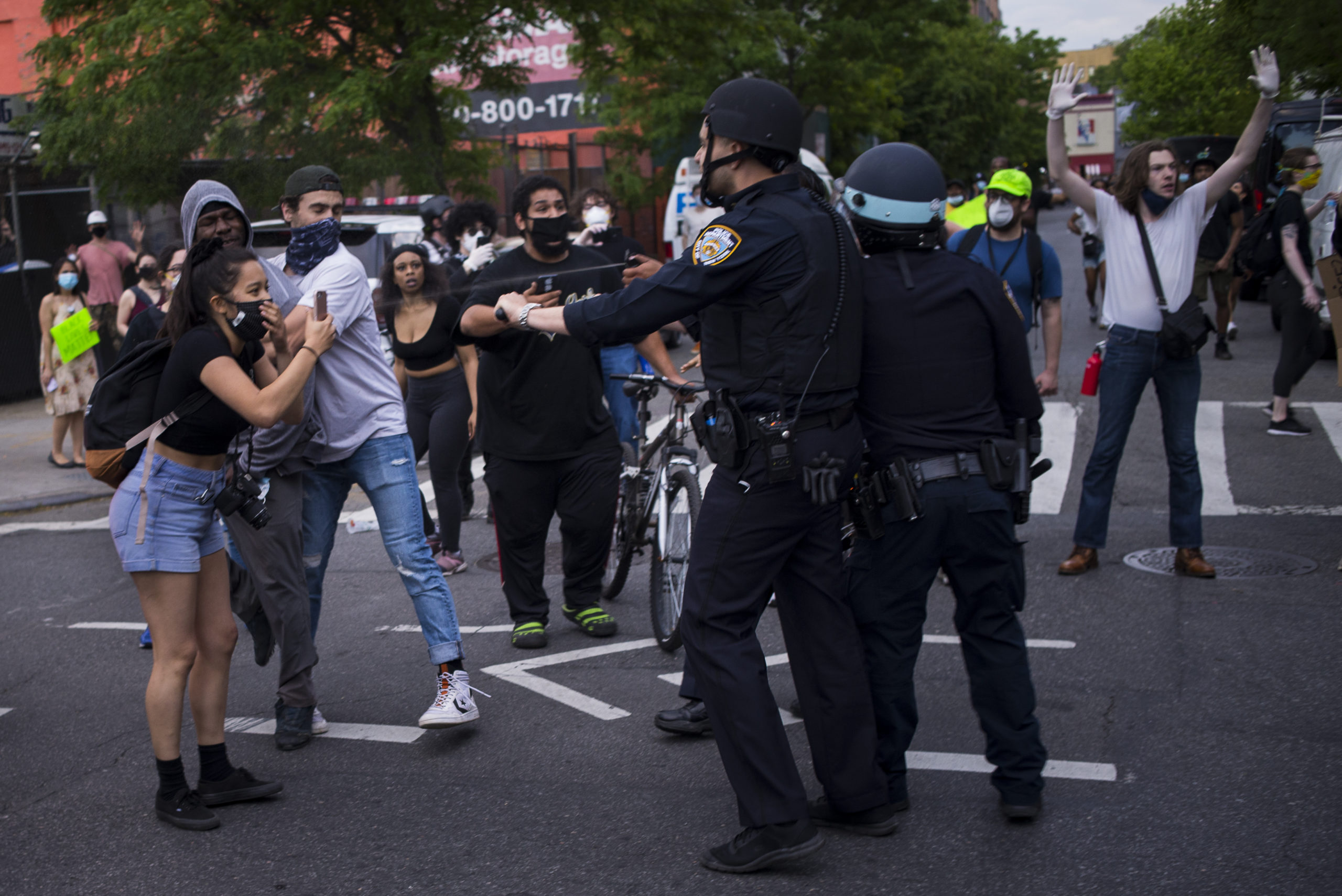
Caption: Police pepper spray a protester. Brooklyn, New York May 30, 2020
The problem in any street clash is that photojournalists don’t have the ability to determine actual motivations and agendas. Without knowing for sure what participants in a protest are doing, there are tough questions about how to describe what we see.
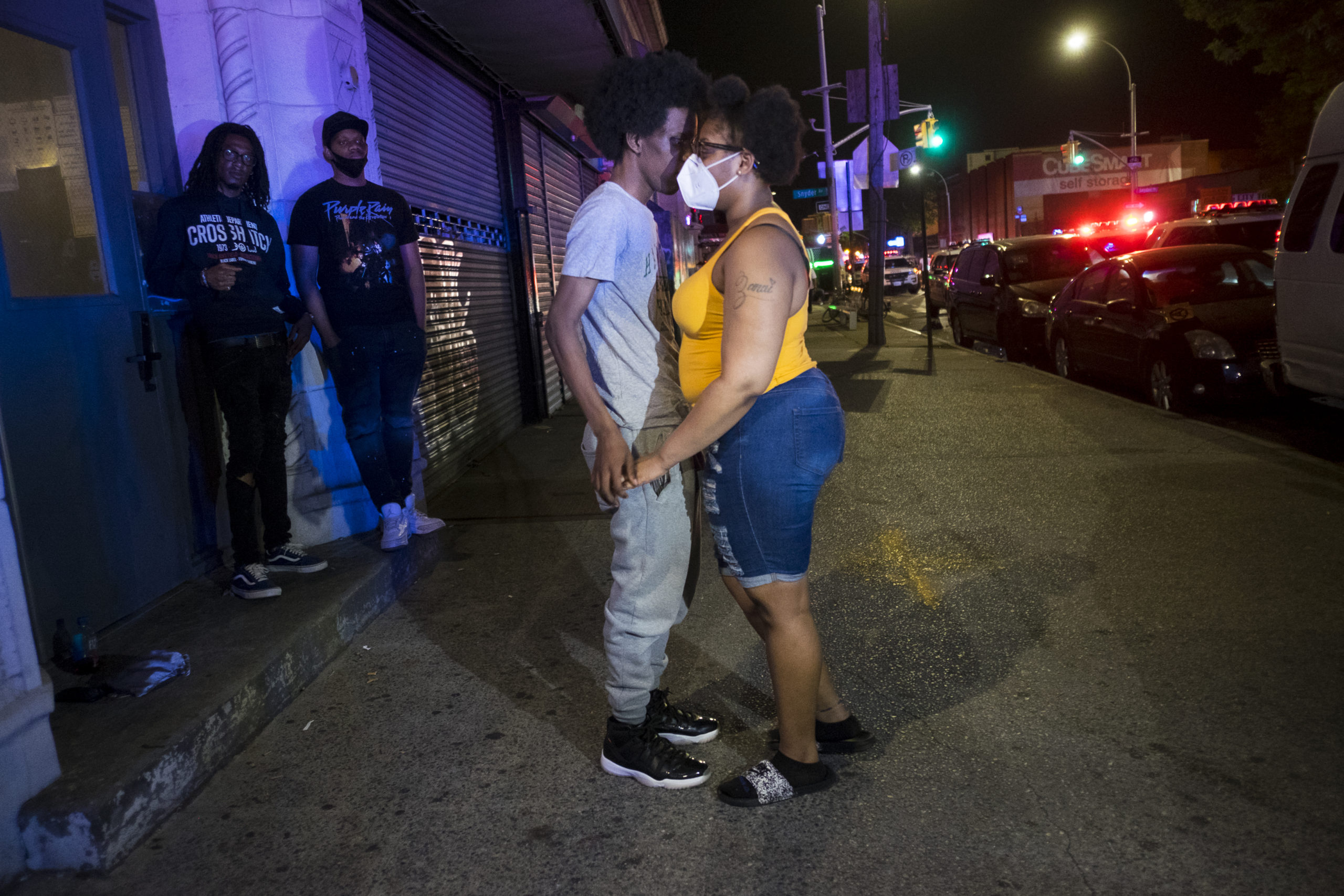
Caption: Protesters during a quiet moment of the evening. Brooklyn, New York May 30, 2020.
My own images that I’ve made these last days speak to these dilemmas around accuracy and respect. On the very broadest level, even in one city, there is not one incident but a cumulative total of hundreds over many days. Most of the time things have been entirely non-violent, especially in the daylight hours. But participants, locations, and circumstances vary widely. Police response can vary within the same department, and it can differ from block to block.
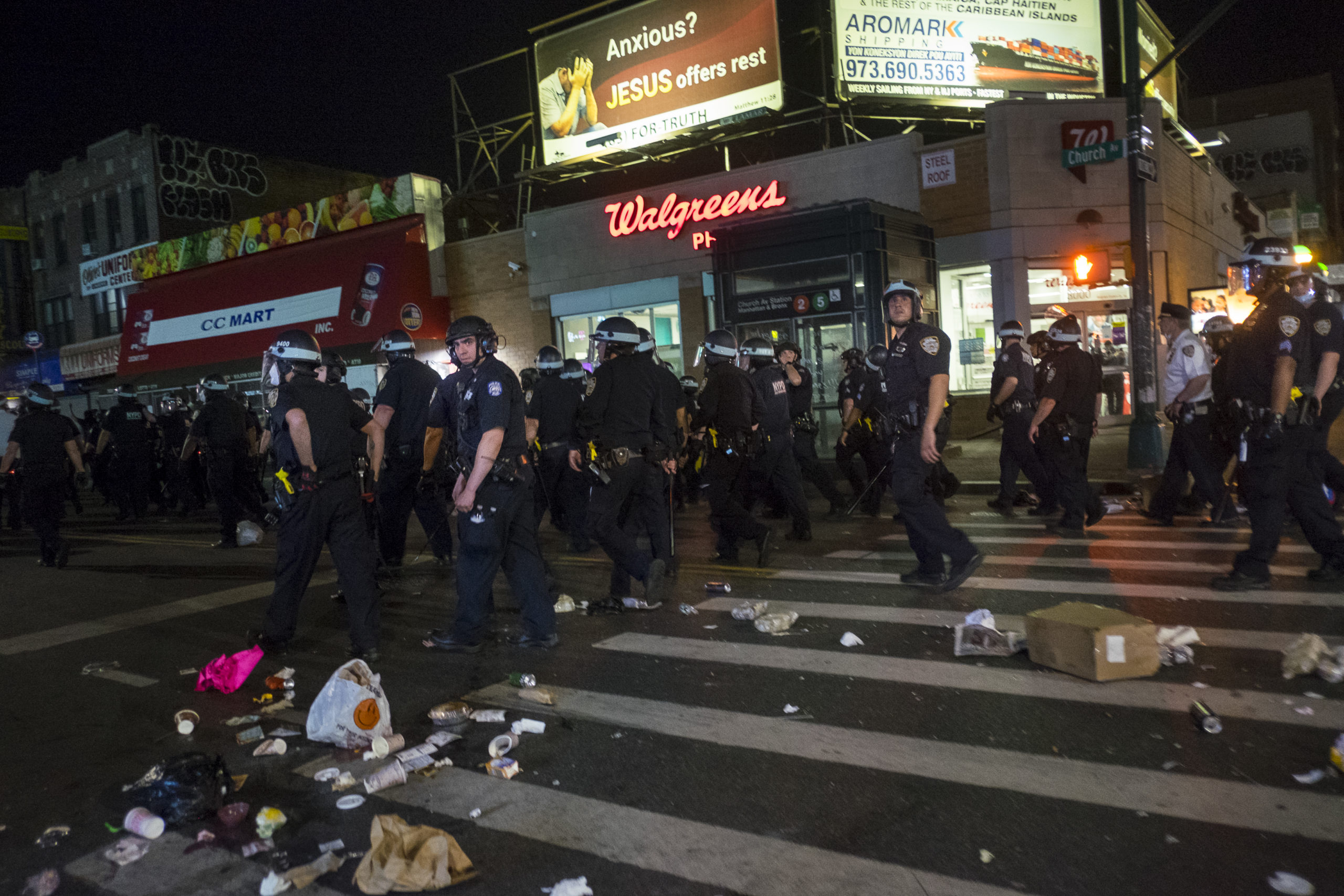
Caption: Brooklyn, New York May 30, 2020
We have to ask whether a single image, or even a series of images, can reflect the multiplicity and complexity of experiences. With the best of intentions, my fear is that images cannot do that. Besides, I fear that attempts to inject into my own photographs elements of irony, subtlety, even levity are too easily drowned out by photos, like the one below, that show scenes of destruction and violence.
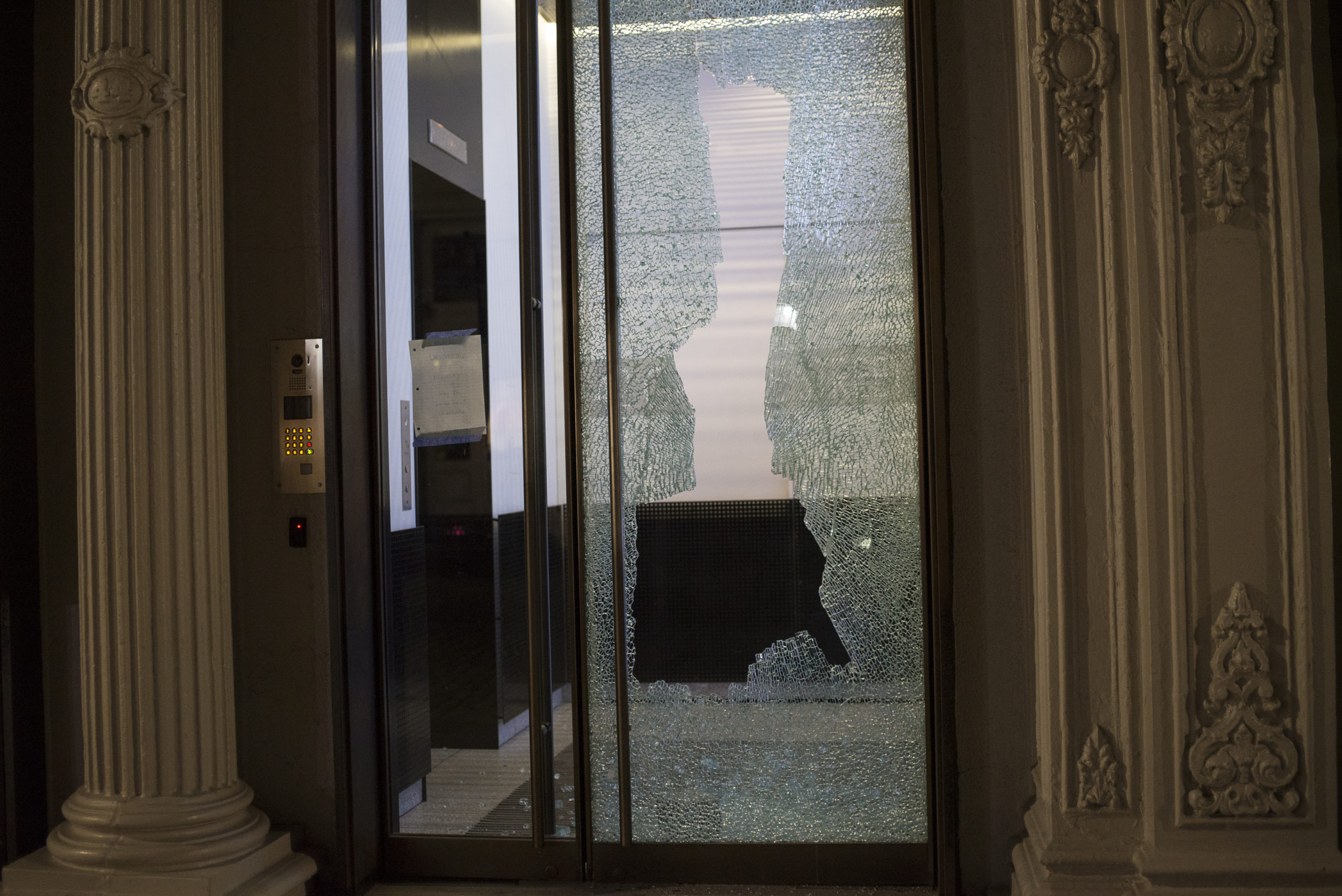
Caption: A destroyed glass door to a luxury residential building, Mercer Street, Soho. New York, New York May 31, 2020
Another challenge for photographers is how chaotic it can be during these eruptions. In especially risky situations, I will pull back a step or two and try to shoot from some cover if possible. Usually I’m trying to manage my tactical positioning first, so I miss seeing a lot of the action around me. Also I shoot a lot with my camera over my head so in that sense it’s pure instinct. I may not know what pictures I have until I look through my take later.
Several of my photos from New York this week help illustrate how challenging it is to make photos of violent protests. Depending on a viewer’s point of view and knowledge of the details, a photograph can blur the perception, for example, between arresting somebody at a street protest and engaging in another act of police brutality.
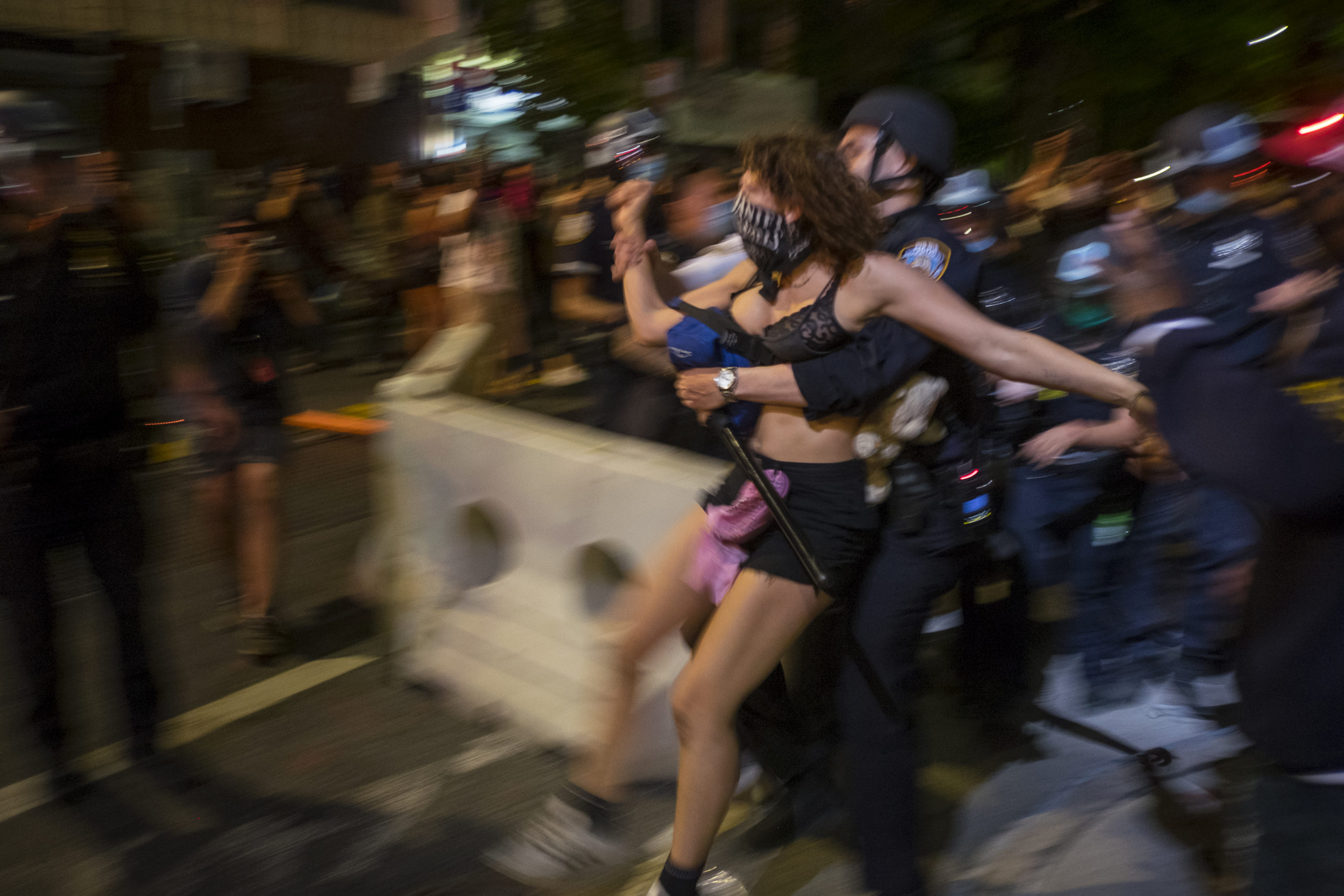
Caption: Police arrest a protester. Brooklyn, New York May 30, 2020.
The immediate context of what may or may not have happened before I make a photograph could be relevant to whether it is a fair or unfair depiction, but sometimes in the swirl of action I have no idea what that immediate context would be.
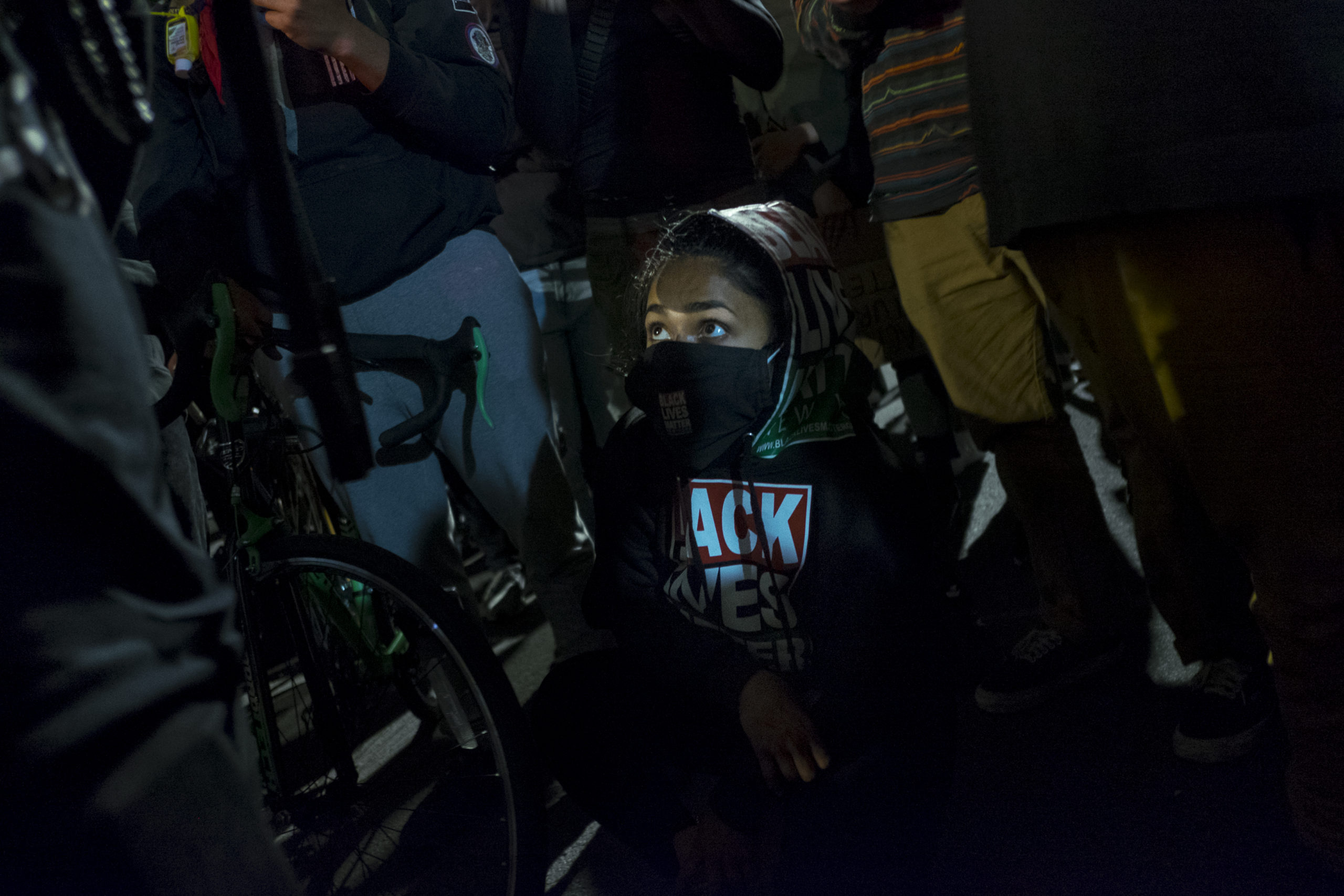
Caption: A group of several hundred protesters at the foot of the Brooklyn Bridge, near City Hall. New York, New York May 31, 2020.
Like many photographers who think about these ambiguities but leave conclusions to viewers, I think those implicit questions are what make an image effective. Also I am careful about whether a photograph should be published or shown based on how it might implicate the dignity of individuals in the frame. These are not easy questions, but I believe that publishing some of these examples is a good way to facilitate discussion around the challenges of protest photography.
The good news is that discussions about how to navigate some of these challenges already are under way. One proactive suggestion is to have more people participating in the journalistic coverage of their own communities. It is a proposal made by Brent Lewis, a photo editor at The New York Times and a co-founder of the Diversify Photo initiative. He worries that the current outbreak of violence is, in his words, “just the next opportunity” for photographers and media professionals to advance their careers “off the pain and suffering of Black folks.” Through Diversify Photo, Lewis and other groups such as the Authority Collective are asking that more people of color be hired by news and media organizations as photographers who can help tell the story of these current protests. This strikes me as a common sense plea because its goal is to reestablish shared and universal ethical and moral standards in a more equitable way.
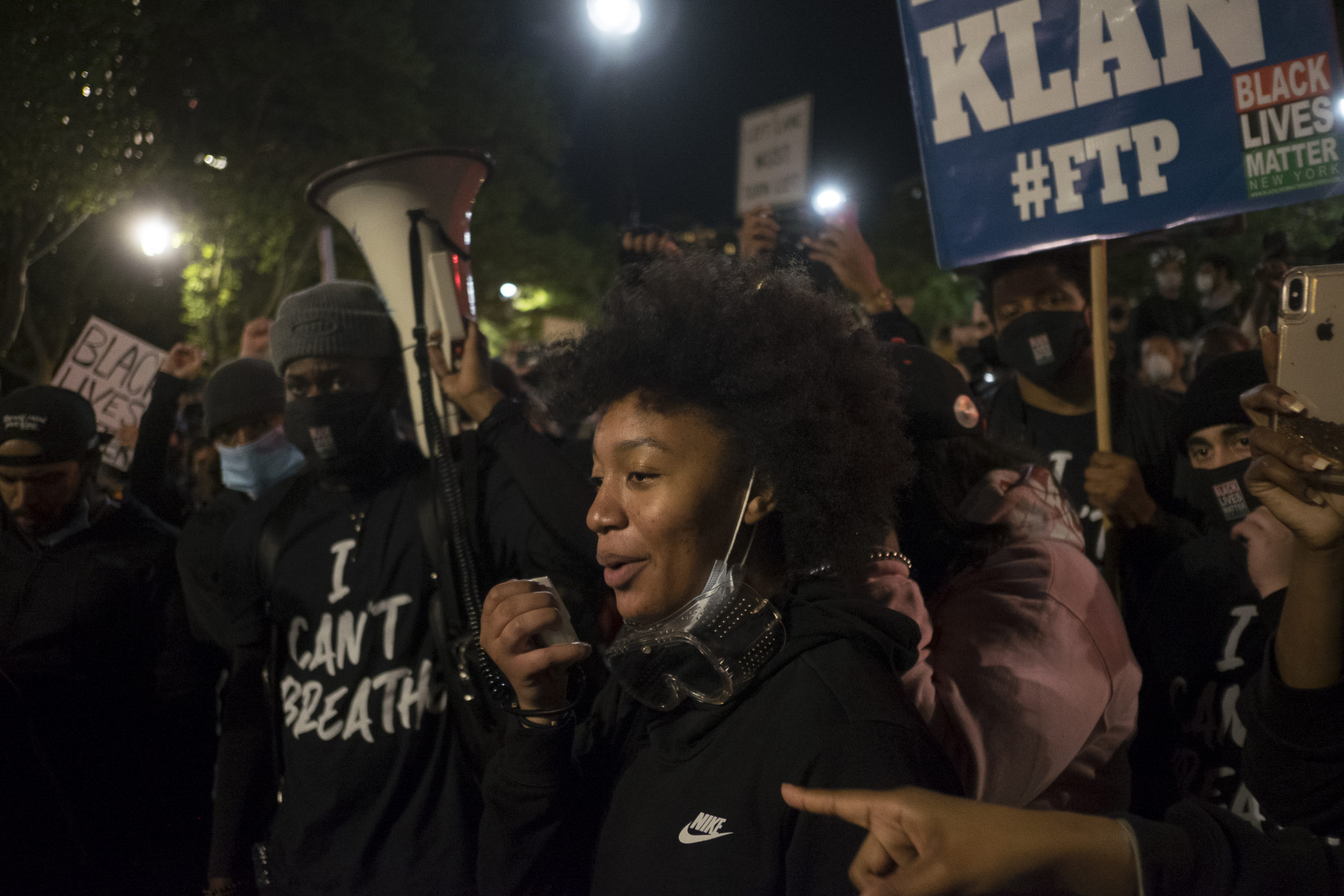
Caption: Nia White, 17, (on microphone) of the newly formed protest group Freedom March NYC, speaks to a group of several hundred protesters at the foot of the Brooklyn Bridge, near City Hall. New York, New York May 31, 2020.
I’m not a Black photographer, and I’m not a white one either. As a Chinese-American, my own implicit biases and experiences of racism inform my perspective as a photographer, but I’m not going to claim any false equivalency between my experience and those of other people.
What I can acknowledge and understand, though, is that the conditions for making and consuming news photographs are much more complex now, while the current scale of tragedy, unrest, and uncertainty in American cities is churning up memories of unrest during the late 1960s in Detroit and Newark, and in 1992 across Los Angeles.
Whether or not ongoing demonstrations reach that same level of intensity will be impacted at least partially by the thousands of images made by professional photographers like myself, citizen journalists, participants, police body cameras, drones, and all the other ways for making pictures. Viewing audiences are going to make decisions about what they think they’ve seen even while meaning is shaped by who makes the images and with what considerations and presumptions. I hope my own efforts pass scrutiny with regard to accuracy and respect. But never have I been more uncertain about the events I am photographing.
–Alan Chin
Lead Photo: Alan Chin. Caption: The killing in Minneapolis, MN of George Floyd, who was black, by a white police officer last week has touched off nationwide protests. Several hundred demonstrators and police clashed for hours on Saturday evening in the Flatbush neighborhood of Brooklyn, along Bedford and Church Avenues. At least two police cars and several garbage dumpsters were burned and dozens of pepper spray use incidents and arrests ensued.
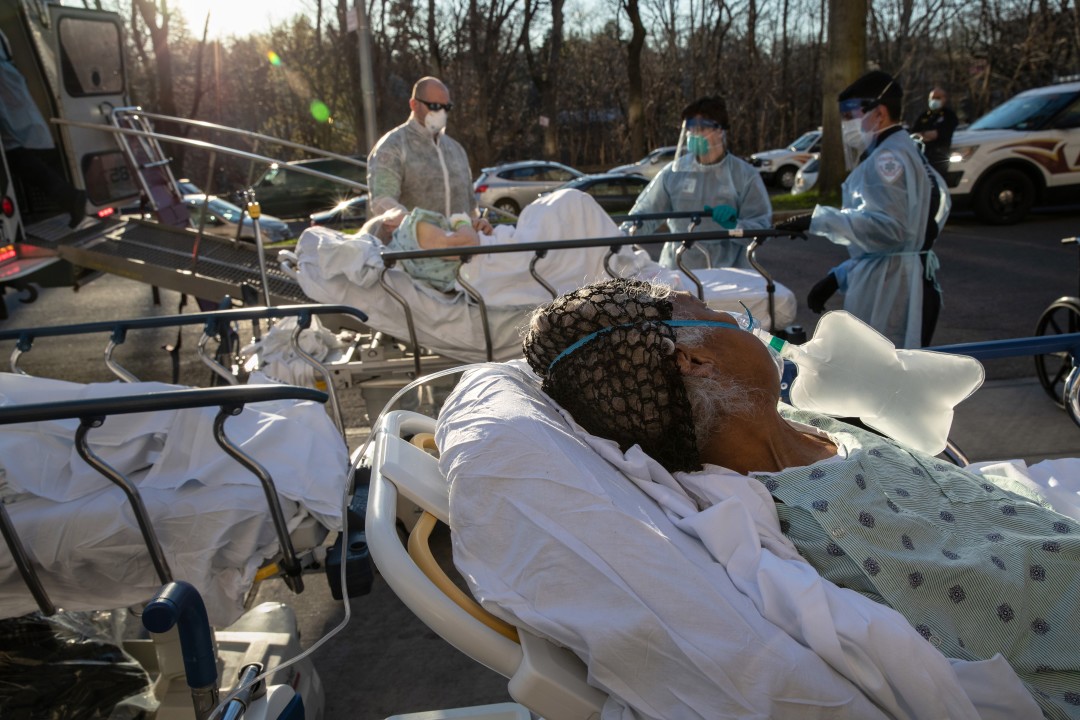
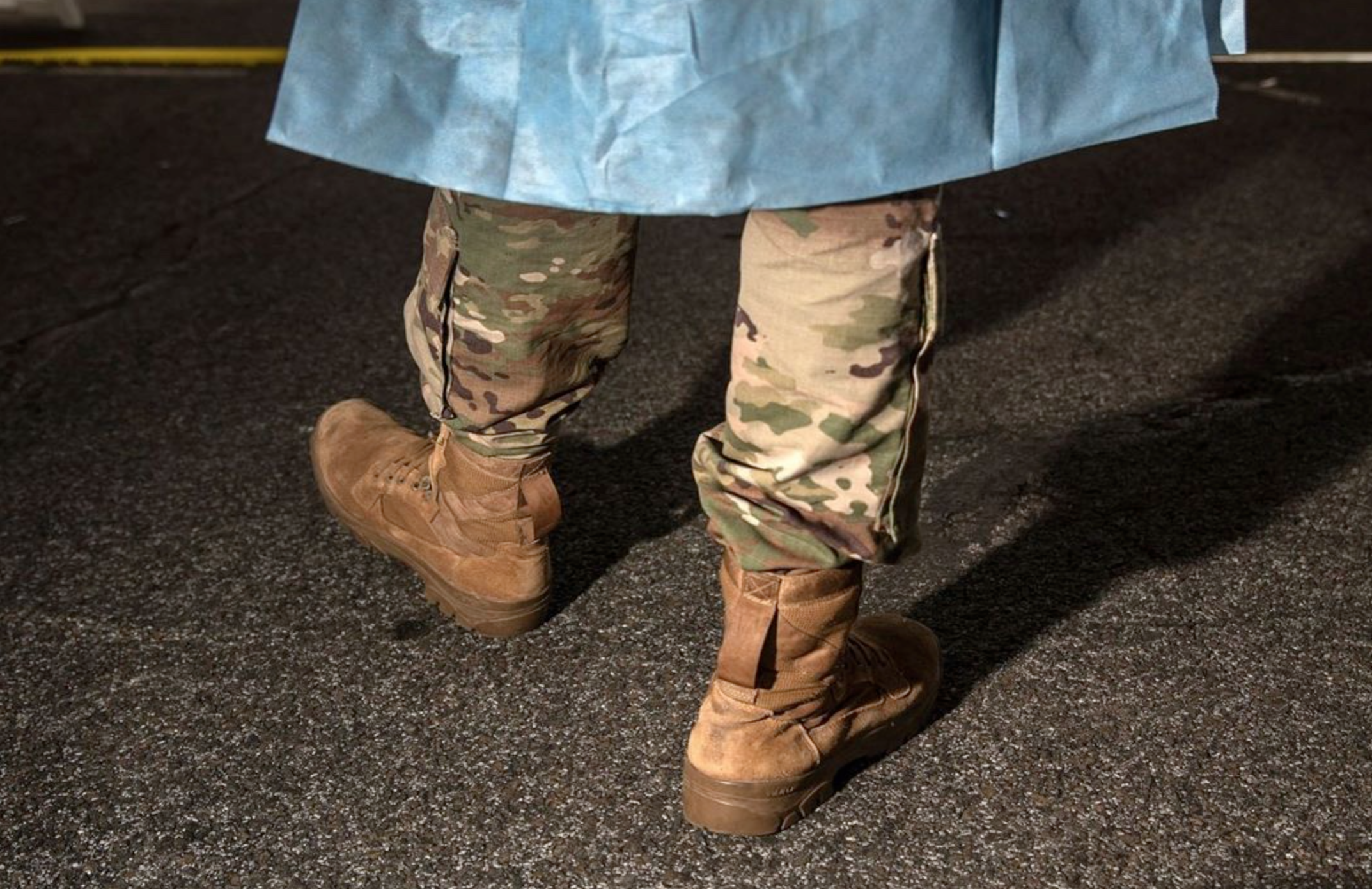
Reactions
Comments Powered by Disqus